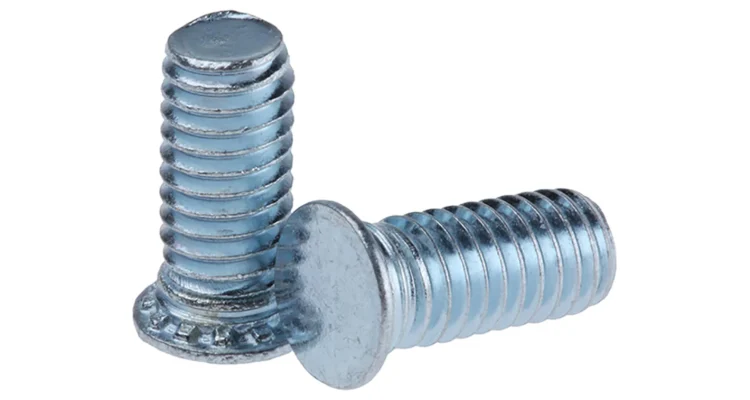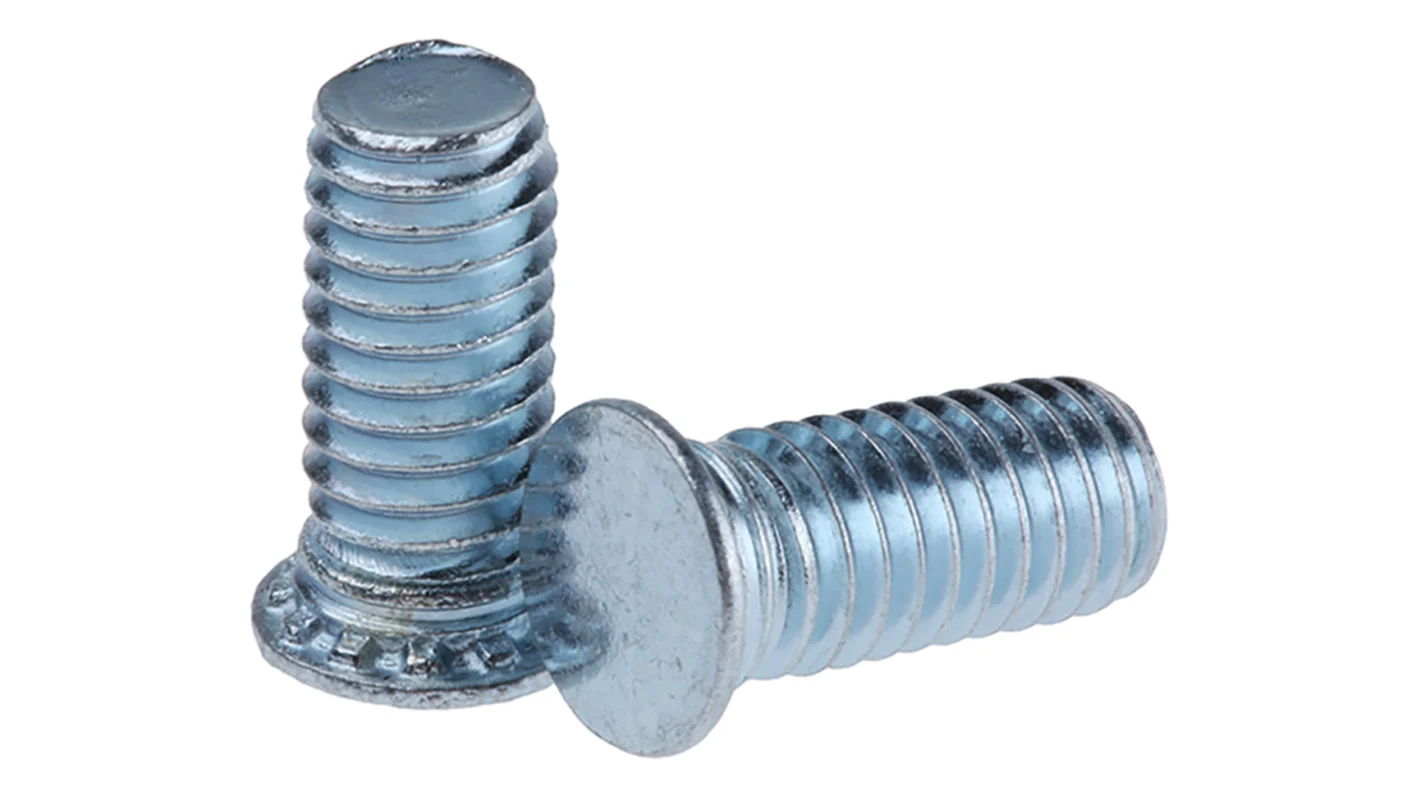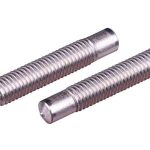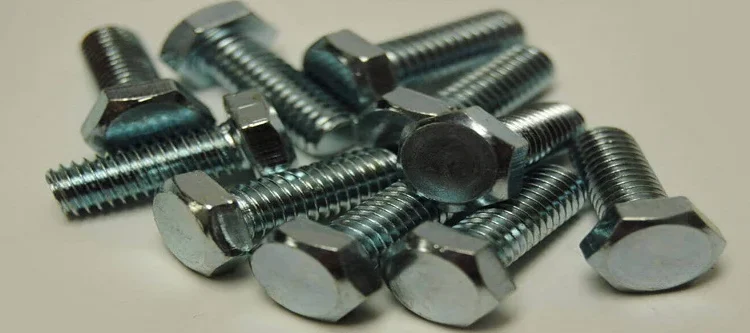
What are the primary considerations for choosing between rod end bolts and press fit studs
Choose between rod end bolts for high vibration resistance and quick disassembly, or press fit studs for superior clamp force and space efficiency, depending on your application’s specific needs and budget.
Table of Contents
ToggleIntroduction to Setup Studs in Machinery Alignment
One of the critical components of the precision machinery alignment process is setup studs. More specifically, these high-quality machinery fasteners and clamps the given machinery ensuring that it functions at the highest possible level. Therefore, these special devices can be utilized to improve the quality of machinery and make it more durable. It will be possible to explain the role of setup studs and focus on their advantages to give a better understanding of the relevant process to manufacturers. Overall, it is clear that setup studs provide the opportunity to improve the machinery alignment process and increase the overall efficiency every company will benefit from.
Understanding Setup Studs
Setup studs are used to align machinery and provide a more stable and better reference point potentially. Typically, these devices are installed during the initial machinery setup and then are used for the rest of the machinery’s life. As a result, the alignment process becomes much quicker as it is used as a reference point one can utilise repeatedly. Therefore, these devices can help reduce the setting up time that is needed whenever a new machine is used. In particular, setup studs can reduce the setting time for aligning the turbine rotor by 30 percent compared to the standard setup for alignment.
Benefits of Using Setup Studs
There are several benefits of using setup studs. For example, these devices are extremely accurate, and they help make the machinery components be aligned to tight tolerances. Additionally, they are resilient to vibration or movement, and that allows ensuring that machinery will continue to function correctly. The overall machinery performance will improve including reduced maintenance. In some cases, the service life of the machinery can be increased by 20 percent. It is also important to mention that these devices are coated to last longer.

RS-PRO-Steel-Zinc-plated
Materials and Coating
The most common materials used for creating setup studs are high strength steel and stainless steel that ensures its durability and long service life. Additionally, they can be coated with nickel or chrome to provide an extra layer of protection. This alloy extends the service life of setup studs that can be used in a variety of applications.
Industry Applications
Setup studs are applicable in several industries due to their precision and versatility. In the aerospace sector, they can be used to secure critical components in aircraft engines. The tight clearances in the engines require that the components be accurately mounted and the right size holes drilled to hold setup studs. The accuracy of their installation may determine if the engine is operational, and the setup may result in thousands of holes. The construction industry is another sector that uses setup studs to put up structures such as bridges. The high rise buildings and heavy traffic require that the studs are set up to make sure that all the parts are aligned in the right position, and the setup is not displaced even when in use. They can as well be applied in the producing heavy machinery industry in the assembly of machinery such as industrial engines and turbines. Here they help in providing a clean, digitized assembly with high precision components. The use of setup studs in these industries helps in creating a steady assembly and enhances the longevity of engines by maintaining the functionality of its components.
Practical Experience with Stud Bolt Installation
The practical applications of installing stud bolts are essential in ensuring that the structures are firm and intact. Involvement in the stud bolt installation accumulates a lot of experience over time, which helps to ensure the safety and longevity of the equipment.
Ensuring Correct Installation
The bolts should be applied when clean, following the required process, and using the recommended torque. Using high pressure results in the elongation of the bolt, which in turn may lower the clamp force by 15%, hence loosening the joint.
Installation Challenges
Installation errors such as cross-threading, improper alignment, and defective threads lead to poor final assembly quality and hence dependability. Technicians should exercise extreme caution when it comes to turning the bolts using a pair of wrenches. They should also use its proper lubricating grease in the case of final assembly applications. Finally, the threads on the studs should be thoroughly assessed to ensure none are damaged.
Application Challenges
In case some threads are damaged, the technician can opt for restoring it using a single solid coil inserts. This installation accessory has concentric locking ears that can be screwed in using the available coil tool.
Benefits of Working with Engineering and Installation Experts
Engaging the services of knowledgeable technicians or relevant companies will offer the students the following benefits. First, there is no room for installation guesswork given that the experts will follow proven stud bolt turning rules that apply to each particular bolt style.
Second, such projects will experience low installation-related cases because the experts will rely on proven study by the Society of Automotive Engineers. Their research report showed that project feasibility-related challenges reduced with up to 30% in the case of when experienced staff were hired as involved consultants.

Stud Bolts and Ceramic
Conclusion
Installation and application challenges that students are likely to face because of the faulty or wrong installation of this installation accessory and the devastating effect on the general function of machinery underline the need for the precision approach to the topic.
Optimal Alignment Results
Naturally, the precision of alignment ultimately impacts the precision of the assembly and the overall quality of the machinery. When high-quality studs are in place and are installed properly, they serve as a stable and, more importantly, as accurate reference point of alignment. Implementing the use of high-precision studs, for example, with tolerance levels of ±0.01mm can significantly reduce errors resulting from misalignment. In turn, this will provide a more precise fit of the parts and will ensure the improved performance of machinery. In fact, aligning machinery to the tolerance level of the studs themselves can result in the gear’s efficiency increasing by up to 15%, according to a study published by the Journal of Manufacturing Systems.
Cost Savings and Quality
Clearly, applying more precise studs and approaches to their installation results in cost savings for manufacturers. This comes partially from reduced maintenance requirements and repairing machinery due to issues involving misalignment. In fact, according to the same research, using precise studs can allow manufacturers reduce operational costs by up to 20%. Furthermore, the use of stainless steel and other long-lasting materials for studs can prolong the machinery’s lifespan by up to 30%, therefore providing a more substantial return on investment. A longer operation life, of course, means the longer time during which the machinery can produce products. Another essential part of it is that the overall quality of machinery increases, which can further improve customer satisfaction and a stronger reputation among business partners.


5 Ways To Accurately Measure Fastener Strength
To accurately m…

5 Key Factors In Specifying Bolts
Size, material,…
